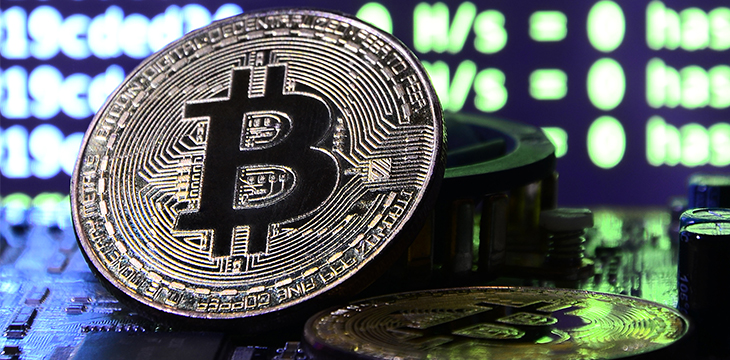|
Getting your Trinity Audio player ready...
|
When everyone seems set on hodling BTC, what “economy” backs its value?
BTC transaction fees are dropping, but not for the right reasons—there are very few users transacting on the network. Transaction volume has reached a record-low, the lowest it’s had since two years. This has driven transaction fees down too, yet it’s not attracting more transactions.
“Earlier this year, when Bitcoin’s price fell by more than 60% from its record close, a less-noticed Bitcoin figure also plunged: the number of daily transactions,” wrote Bloomberg. In the article, Multicoin Capital crypto hedge fund managing partner Kyle Samani is quoted saying, “Merchants, payment processors and online gambling are moving off of Bitcoin.. Our Bitcoin position as a fund is small — I believe Bitcoin is in the process of failing.”
Some argue that companies using it regularly have been batching transactions and minimizing the bulk congesting the network, which would account for the huge cut in transaction volume. Some say it’s due to a drop in interest after a string of unfortunate events, scam scares, and allegations of trade manipulation shook the cryptocurrency market down in the past few months and scared investors enough to sell off.
While pinpointing the real reasons behind the puzzling calm may take some time, it’s not unreasonable to find this troubling.
Bitcoin was meant to be a method of transferring value between users, but ended up being more of a get-rich quick investment product. There’s nothing wrong with hodling it for a time for the profits, as that is what currency (or cryptocurrency, for that matter) trading is. But now no one wants to spend it, and everyone hodling for potential profits could actually corrode the value that attracted investors in the first place.
Here’s why. If a population was so intent on foreign exchange trading and were so convinced that their local currency will be so valuable in the future that they decided to stash all their bills under their bed mattresses, sure, the value would go up due to the induced scarcity—but only for a time. This will bring the market to a bit of a halt, but again, only for a short time. At some point, everyone will concede to the fact that they all need a liquid medium of exchange, but will remain stubborn on hoarding and holding the original currency. There’s a tendency to look for alternatives, an alternative currency that can be fluidly spent and exchanged while still keeping the “profitable” one in the vault (bed mattress).
But when this goes on for a while, everyone will get used to and comfortable with the alternative currency, and the hoarded one will lose its place in the market—as well as its value. By the time hoarders realize this, they would all be competing with each other on a race to sell off their hoarded coins before it completely plummets, and the sell-off drives the value even lower.
Not sure if it needs further explaining but in case the analogy is lost, BTC is the original currency being stashed under bed mattresses. As for the alternative currency—there are around 2,000 cryptocurrencies now circulating in the market. That’s 2,000 competitors willing to scoop up whatever transactions the legacy chain fails to accommodate—be it big purchases for cars and houses, or “poor people” purchases for those who “live on less than $2 a day.”
For a currency to maintain a decent floor value, it has to have other functionalities backing it as a valuable asset outside of the trading market, regardless of hype. BTC, as some say, may not be a digital currency anymore back when fees were skyrocketing and wait times were getting longer and longer. It was positioned as “digital gold.” But even gold has intrinsic, tangible value for various real-world applications which keeps its trading value secure. And while Bitcoin as a blockchain has immense uses, bitcoin the cryptocurrency’s trading value was standing on one—it’s high-speed, low-cost value transfer proposition, and it seems users have been sifting through to competing cryptocurrencies.
Without a use case, it’s digital diamond at best—it’s valued expensively because we insist it is expensive, whether or not we can back that argument. Some argue that fiat is just the same—we value it because the government dictates that we honour its dictated value. While this is true to a certain extent, fiat is backed by the economy of a country—the market activity within it. What economy backs Bitcoin if no one uses it?
Intelligent cryptocurrency hodlers know that the drastically high-profit era for cryptocurrencies has an end. At some point, these values will stabilize and the fluctuations will not be as attractive to newbies. Maybe then, BTC will get back up as a fluid, cheap, and fast transaction cryptocurrency. By that time, perhaps most would have already made their profits and will be willing to actually start using it. The question is whether that shift would happen before other cryptocurrencies gain enough market traction to render BTC as “just an option.”
This isn’t to say people should sell off. This is to say that communities (hodlers, users, and miners alike) need to take a more mature, objective, and pro-active stance on development, rather than constantly nodding their heads to one prevailing source of proposals. One needs to ask if an update is really for the best interest of users, because like in traditional business, it’s in an investor’s best interest to make sure that they are serving their clients’ best interests. And in this case, “clients” are users of the service, not hodlers—as hodlers are more comparable to stock holders.
Meanwhile, the SegWit update to Core’s client has just been released, which means exchanges will subsequently have an easier time implementing their own updates as well. Whether this will take the legacy chain full steam ahead is yet to be seen. The results of the implementation are especially critical in an industry where the competition is tight—and quickly gaining speed: more and more exchanges have started accepting other cryptocurrencies in different countries.

 12-17-2025
12-17-2025 





